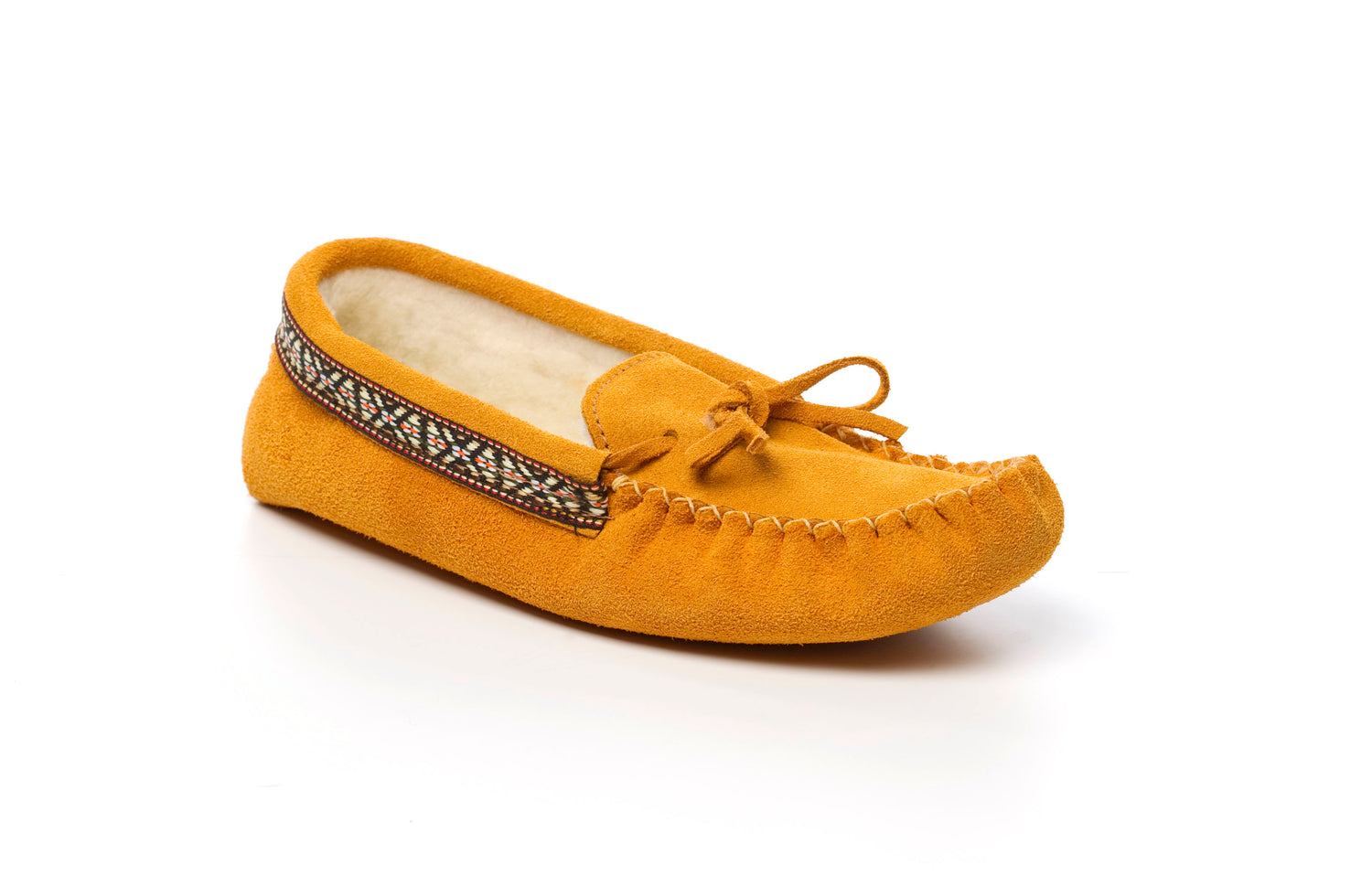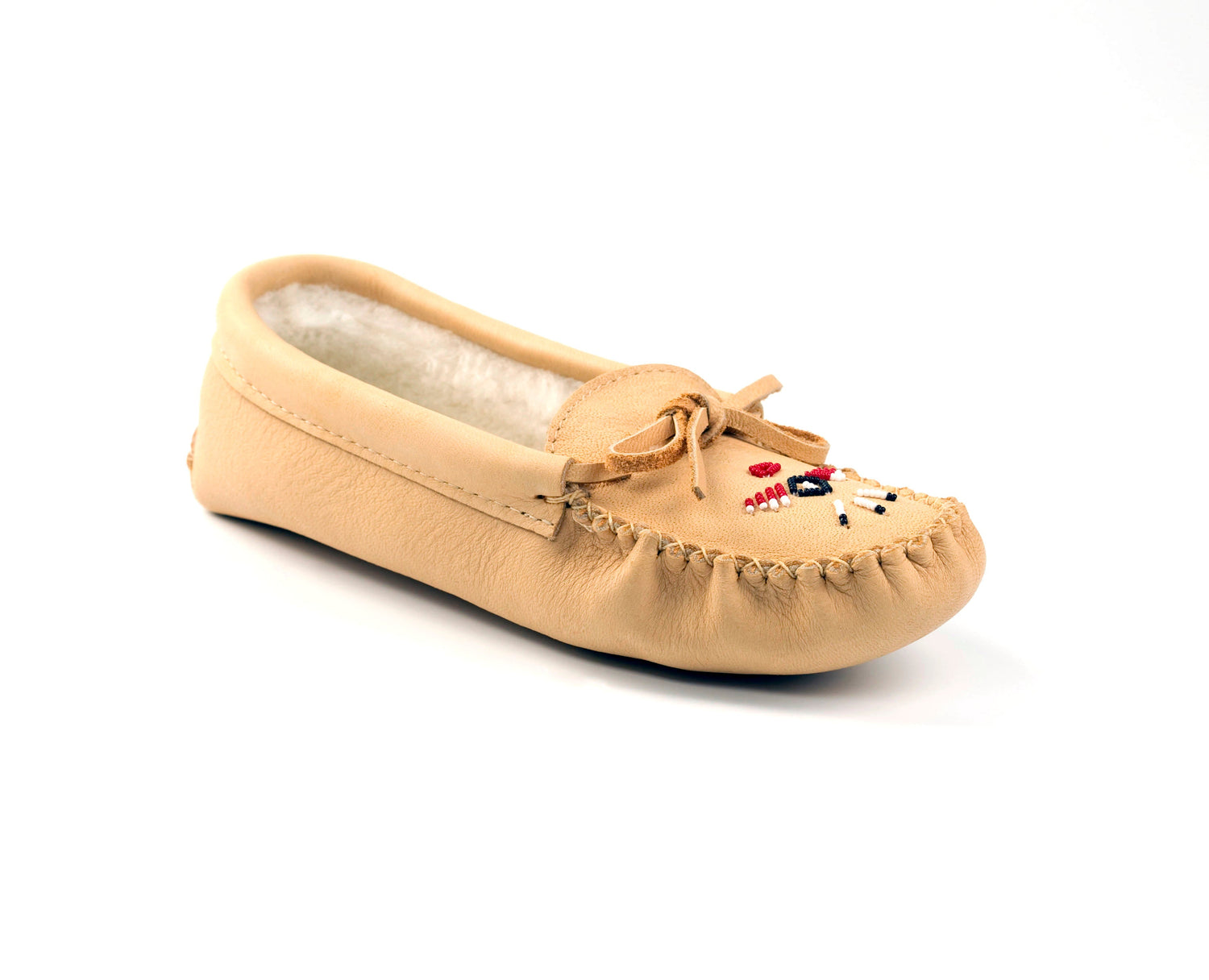
More Than Just Decoration: Unraveling the Practical Purpose of Moccasin Fringe
Share
When you picture a classic pair of moccasins, chances are a distinctive feature comes to mind: the fringe. Often seen as a charming decorative element, many might assume its sole purpose is aesthetic. However, delve into the rich history and ingenious design of traditional moccasins, and you'll discover that this seemingly simple embellishment was, in fact, born out of pure practicality and a deep understanding of the environment.
Moccasins, crafted by Indigenous peoples for millennia, were more than just footwear; they were a vital tool for survival and navigation through diverse landscapes. Every element of their design, including the fringe, served a deliberate purpose.
So, what was the practical genius behind the moccasin's fringe?
-
Water Management and Seam Protection: Perhaps the most crucial function of the fringe was to shed water away from the foot and, more importantly, away from the vulnerable seams of the moccasin. Imagine walking through dew-laden grass, a shallow stream, or rain. The dangling strips of leather would collect and wick water away from the point where the upper meets the sole, preventing it from soaking into the stitching and the foot inside. This helped keep the wearer's feet drier and prolonged the life of the moccasin by protecting the integrity of the seams, which were often sewn with natural materials.
-
Protection from Brush and Debris: Walking through dense forests, tall grasses, or thorny bushes was a daily reality for many Indigenous communities. The fringe acted as a flexible barrier, providing a rudimentary form of protection for the wearer's ankles and the top of the foot. It could deflect small twigs, thorns, and debris, preventing them from getting inside the moccasin or scratching the wearer. Some even suggest it offered a minor deterrent against snake bites by disturbing the ground or drawing attention away from the foot itself.
-
Concealment and Camouflage: While less about direct physical protection, the fringe also served to break up the outline of the foot and the stitching, effectively camouflaging the wearer's presence in natural environments. This was particularly useful for hunting, allowing for quieter, less noticeable movement through varied terrain. The movement of the fringe could also subtly mimic the movement of natural vegetation, further enhancing concealment.
-
Noise Dampening: The soft, pliable leather strips of the fringe could also help to muffle any slight sounds produced by the friction of the moccasin against the ground, contributing to stealthy movement.
In essence, the fringe on moccasin was a testament to the sophisticated engineering inherent in traditional Indigenous craftsmanship. It wasn't just a stylistic choice; it was a clever, multi-functional design element that enhanced comfort, durability, and practical utility for those who relied on their moccasins for daily life in the wilderness.
Today, while many moccasins are worn for comfort around the home or as casual footwear, the fringe remains a beloved and iconic feature. It's a beautiful nod to the heritage of these remarkable shoes, carrying forward the legacy of ingenuity and harmony with nature that defined their original creation. So, the next time you see moccasin fringe, remember it's more than just a flourish – it's a whisper of ancient wisdom and practical design.



